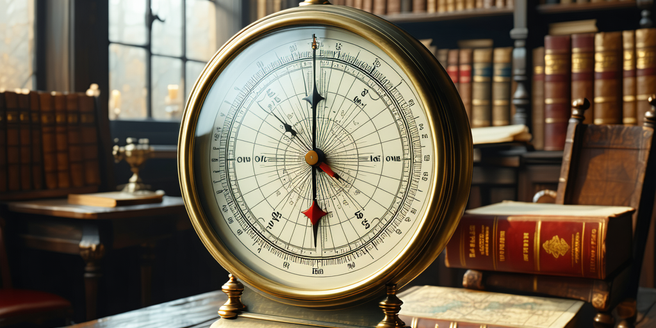
Understanding the Basics of Barometers
Barometers are essential tools in meteorology, providing valuable insights into atmospheric pressure. They function by measuring the weight of air in the atmosphere, which is indicative of weather changes. A rising barometer suggests improving weather or clear skies, while a falling one indicates deteriorating weather, potentially predicting storms or rain. Understanding how these instruments work is crucial for scientists and enthusiasts alike. Their accuracy and reliability have been refined over centuries of use. Historically, they have played a vital role in maritime navigation and safety. By converting atmospheric pressure into readable data, barometers offer a window into the short-term future of the atmosphere. This foundational knowledge forms the basis for more advanced weather prediction methods, underpinning their critical role in modern forecasting.
Historical Significance of Barometers
Barometers have a long and storied history, dating back to the 17th century. First invented by Evangelista Torricelli in 1643, they revolutionized understanding of atmospheric phenomena. Early barometers were mercury-based and provided the first tangible evidence of air pressure changes. Over time, these instruments became essential in navigation as they helped sailors predict weather patterns while at sea. As technology evolved, barometers also transitioned from being purely mechanical devices to electronic versions that offer more precise measurements. Barometers enabled scientists to correlate atmospheric pressure with weather conditions, laying the groundwork for meteorology as a science. Their historical significance cannot be overstated, as they opened new pathways in scientific observation and understanding of the natural world.
Types of Barometers and Their Functions
Barometers come in various types, each serving a specific function. The most common types include mercury, aneroid, and digital barometers. Mercury barometers, the oldest form, use liquid mercury to measure air pressure and are highly accurate. They have been used for weather prediction since the 17th century. Aneroid barometers, lacking liquid, utilize a small, flexible metal box called an aneroid cell that expands or contracts with pressure changes. These are more portable and safer than mercury types. Digital barometers, the most modern version, use electronic sensors to detect pressure, providing precise readings on digital displays. Each type plays a distinct role in measuring atmospheric pressure, aiding meteorologists and enthusiasts in weather forecasting.
How Barometers Aid in Weather Prediction
Barometers are indispensable tools for weather prediction, based on their ability to measure atmospheric pressure. When a barometer shows declining pressure, it often signals that stormy weather is approaching, while an increase suggests fair weather. Regular calibration of these instruments is essential to ensure accurate readings. By continually monitoring these pressure changes, meteorologists can forecast short-term weather conditions with remarkable accuracy. The information they provide is crucial for avoiding potential hazards related to unforeseen weather. Barometric data is often combined with other meteorological measurements, like temperature and humidity, enhancing the predictive capabilities of weather models. This culminating data offers critical insight into developing weather patterns, enabling precise forecasts that serve both public safety and planning.
Modern Innovations in Barometric Technology
Barometric technology has continually evolved, adapting to modern needs. Recent advances have led to the development of compact, highly sensitive sensors integrated into smartphones and wearable devices. These innovations allow users to access real-time atmospheric pressure data anywhere, contributing to personal weather tracking and enhanced app functionalities. This accessibility has revolutionized the way individuals interact with weather data on a daily basis. As a result, people can now plan outdoor activities with greater confidence and safety. Additionally, advancements in digital barometers have improved the accuracy and precision of readings, integrating seamlessly with weather stations. This progress in barometric technology not only aids professional meteorologists but also empowers amateur weather enthusiasts, ensuring that the public remains informed and prepared for atmospheric changes.
